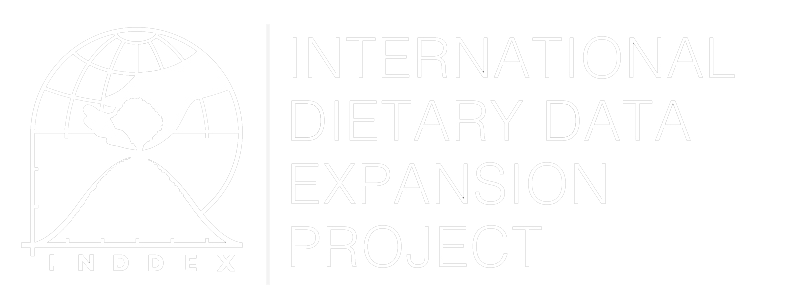Modified Functional Attribute Diversity (MFAD)
Overview
The Modified Functional Attribute Diversity (MFAD) indicator is one of the two entropy-based indicators included in the Data4Diets platform. MFAD and the Shannon Entropy Diversity Metric both measure dietary diversity by calculating the deviation from a perfectly equal distribution of all food groups in the diet. The MFAD is derived from the Functional Attribute Diversity (FAD) approach, which is a metric used in the biological sciences to measure the diversity of plant and animal communities based on functional traits, or characteristics that group species together based on their function within the community (Petchey & Gaston, 2006). MFAD adds to this method by weighting FAD by the number of functional traits, thus measuring the dispersion of species by these functional units rather than by the individual species themselves, which in turn allows for comparison of the metric across ecological communities (Schmera et al., 2009). In the case of dietary diversity, the functional unit is defined as the nutritional components of the diet, and MFAD measures the variety of nutrients based on both the number of different food items, as well as the amount of each item present (Remans et al., 2014). For example, two food items that are nutritionally similar, but are in different food groups, would not be counted twice in this metric.
Method of Construction
As mentioned previously, the main difference between FAD and MFAD is that MFAD weighs species, or foods in this case, included in the calculation by their functional traits. Functional traits are attributes of food that are functionally similar, which in the case of diet means nutritional composition, even though the foods themselves may not be categorized into the same food group. This is to prevent an increase in measured dietary diversity when functional (or nutritional) diversity does not exist. For example, adding potatoes to a starch-heavy diet would increase a metric such as the Household Dietary Diversity Score (HDDS), but would not increase the MFAD, as staples and potatoes tend to provide the same nutrients.

Where n is the number of individual food items, d is the dissimilarity between food items i and j, which is defined by nutritional composition, and N is the number of functional units defined, such that foods that are identical in their nutritional composition are considered as the same functional unit (Ricotta et al., 2005). MFAD can take on a value between 0 and 100, and as the value increases it signifies a diet composed of more nutritionally dissimilar, and thus more diverse, foods.
Uses
Adapting MFAD for use in nutrition and food security research has been a relatively new development (Remans et al.,2014). Since foods are divided by their functional (nutritional) characteristics, the indicator measures the diversity of nutritive values within national food supplies or of national crop production (Lele et al., 2016). It has been suggested as a main way to measure food nutrient adequacy, which is one of the seven indicators chosen to best assess sustainable nutrition security (Gustafson et al., 2016).
Strengths and Weaknesses
A strength of this indicator is that it highlights the nutritional components of food, rather than relying on a simple count of diversity to represent quality. Additionally, as a scale-invariant indicator, it can be compared across countries and timeframes to assess relative diet quality, such as was done by Remans et al. on a global level (2014). However, a weakness is that MFAD calculations rely on Food Balance Sheets (FBS), which means data are not based on actual consumption but on availability, and thus national-level data could obscure regional-level differences in diversity. The data source also limits the foods included in the analysis to those reported on the FBS (Lele et al., 2016). Additionally, as a composite index, the MFAD cannot distinguish between the specific nutrients that are in abundance and those that are lacking in the diet, such as a metric like individual intake of micronutrients or the individual intake of macronutrients, nor has it been adapted to use with expenditure data, such as the Shannon Entropy Diversity Metric (Wang et. al, 2017).
Data Source
MFAD can be calculated using FBS data in conjunction with a Food Composition Table to identify the nutritional values of the foods included in the analysis. National or regional Food Composition Tables should be used to identify the nutrient contents of the foods and can be found at Food and Agriculture's (FAO) International Network of Food Data Systems (INFOODS) or the Agricultural and Food Systems Initiative World Nutrient Databases for Dietary Studies (WNDDS).
